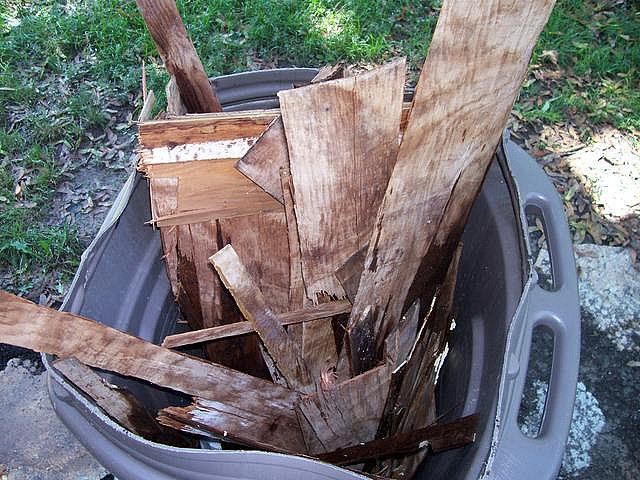Serpula lacrymans or “dry rot” is a timber-destroying fungus that is known to affect homes throughout the UK, and indeed the wider world. Not diagnosing the problem and failing to act swiftly can result in dire consequences for joists and other support beams around your home. The problem can become very costly when left untreated, and with that in mind i’ve written this short article in an attempt to help you spot the signs as early as possible.
So, if you think you might have a dry rot issue, take a moment to read through the rest of this page and hopefully you should be better placed to identify the problem and act accordingly. Just remember that any complications with the support beams in your home are very serious and should be addressed immediately.
What Does Dry Rot Look Like?
Usually you’ll find that dry rot causes wood to darken and crack, though a grey skin with patches of light purple and yellow can also be a good indication. Sometimes it can even cause a white or red hairy layer, therefore, if you notice this is happening in your home, it’s definitely time to take action.
What Does Dry Rot Affect?
As I mentioned previously, dry rot can seriously damage the support beams in your home, but it certainly isn’t limited to this. Unlike its wet counterpart, dry rot can travel through other non-wood materials very quickly and thus can spread much faster. This is why identifying it early is of paramount importance and will hopefully stop it spreading to your furniture.
How Can Dry Rot Be Treated?
As dry rot usually only affects damp timber, the first thing you’ll need to do is stop all wood from becoming wet. If the rot is on roof joists, chances are your loft is experiencing condensation because of the heat coming from your home. So, if you think this is the root causes, head down to your local hardware store and find out which products they stock to combat this.
That said, combatting dry and wet rot fungi can be far more complicated than this and often results in the need to remove and replace any timbers affected. This is a job for the professionals i’m afraid and will probably cost quite a lot of money. However, if you catch it early enough, it’s more than possible to use specially designed fungicides – so do some research and see if this is viable for you.
Well, there you have it my friends. I hope now you’ve read all the information you’re a little better placed to make the right assessments and decisions about your own rot problems. It’s important that you never leave anything like this until the last minute, as it could have a significant impact on both the lifespan of your property and the thickness of your wallet.
When identified and treated swiftly, this problem may only cost you a couple of hundred pounds. However, the cost can run into the thousands otherwise so be careful!







